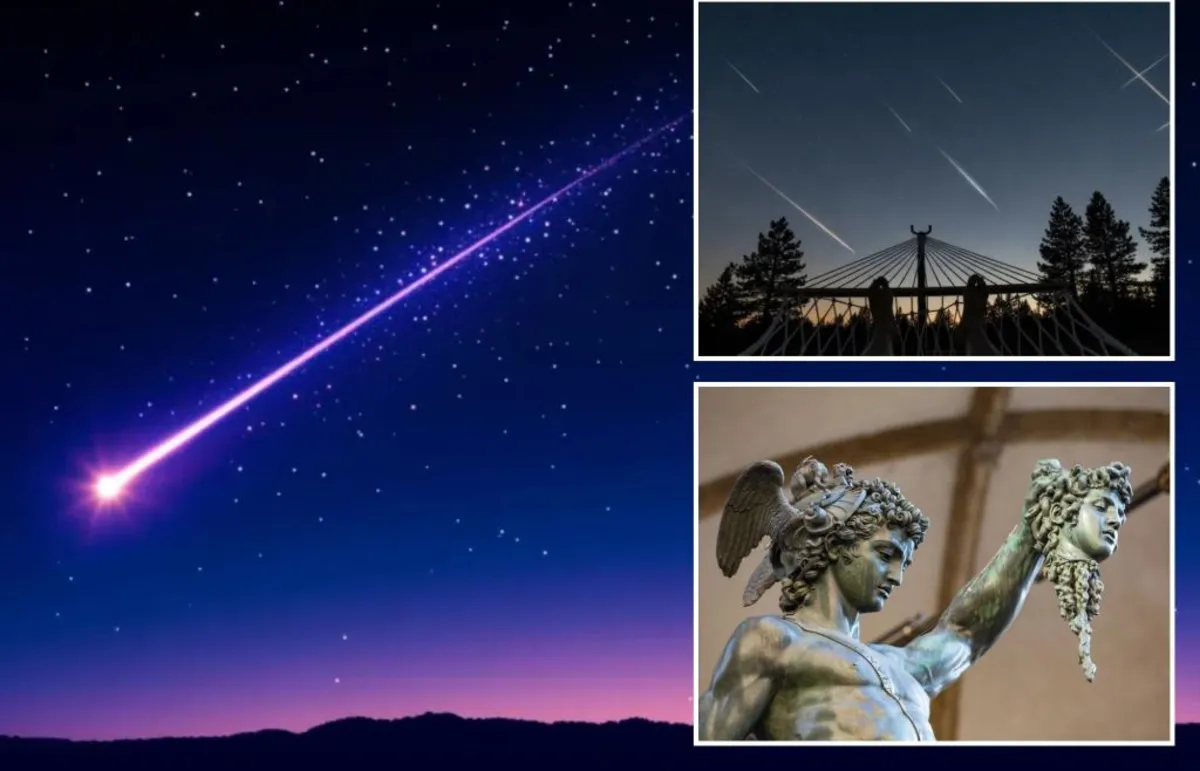
Prepare to be enchanted as the annual Perseid meteor shower graces our skies! This celestial event is considered one of the finest sky shows in our solar system, and it will be visible across the United States and much of the Northern Hemisphere in the upcoming days. Here’s everything you need to know to make the most of this stunning astronomical spectacle.
The Perseid meteor shower will be visible from Thursday, July 17th, through late August 2025. This year, the shower coincides with a last-quarter moon phase, allowing for darker skies that enhance the visibility of the early meteors. In North America, the best viewing times begin as early as 10 p.m. and continue through the pre-dawn hours. The shower is expected to peak on the evening of August 12th, lasting until just before dawn on August 13th. However, it’s important to note that the full Sturgeon Moon in Aquarius on August 9th will create challenges for optimal viewing, as only the brightest meteors will be visible during this time.
To maximize your meteor viewing experience during the meteor shower in July 2025, aim for the early days of the showers, particularly from July 18-28. The new moon on July 24 provides the perfect dark canvas for this celestial performance. Following this date, the moon will gradually wax into a crescent, which may start to interfere with the visibility of the meteors. The sky will remain excellent for viewing until the 28th, as the moon’s glow will begin to compete with the brilliance of the shooting stars.
The prime time for observing the Perseids is between 2 a.m. and 4 a.m. During this peak window, you can expect to see up to 100 meteors per hour dancing across the night sky. NASA has previously noted that fireballs—large, bright meteors—are a hallmark of the Perseid meteor shower, adding to the excitement of this spectacular event.
Meteors are formed from particles shed by comets and asteroid debris. As this cosmic material travels around the sun, it leaves a trail behind. When Earth passes through these trails, the particles collide with our atmosphere and burn up, resulting in brilliant streaks of color and light across the sky. The Perseid meteor shower originates from the comet known as Swift-Tuttle (formally designated 109P/Swift–Tuttle). Each year, our planet intersects with this comet's orbital path, providing a breathtaking display as fragments collide with Earth’s atmosphere.
Due to the orbital path of Swift-Tuttle, the Perseid meteor shower is most prominently visible at northern latitudes. The radiant point, located in the Perseus constellation, does not rise above the horizon in southern latitudes, which means observers in the southern hemisphere will witness significantly fewer meteors compared to their northern counterparts.
The Perseid meteor shower is named after the Greek hero Perseus, renowned for slaying the Gorgon. The showers are linked to Perseus because the radiant point from which the meteors appear lies in the direction of the Perseus constellation. This cosmic event is thought to commemorate Perseus's gilded conception, where Zeus, the father of gods, impregnated his mother, Danae, through a shower of gold. Intriguingly, the Perseids are also referred to as the “tears of St. Lawrence,” as they peak around the date of the saint’s martyrdom on August 10. St. Lawrence is the patron saint of cooks and firefighters, noted for his witty remark to his torturers, declaring, “I am cooked on that side; turn me over, and eat.”
For optimal viewing of the Perseid meteor shower, it is advisable to find a location with clear skies, away from light pollution and crowds. While some might consider using telescopes or binoculars, it’s best to take in the entire sky as meteors can appear anywhere. To enhance your experience, lie flat on your back with your feet pointing south. Allow your eyes to adjust to the darkness for about 30 minutes, and avoid looking at your phone, as it can impair your night vision and disrupt your connection to the cosmos.
In addition to the Perseids, skywatchers can look forward to the overlapping Delta Aquariids and Alpha Capricornids on the evening of July 29th, increasing your chances of witnessing shooting stars in July. Later this year, the Geminid meteor shower will be active from December 4 to 17, peaking on the evening of December 14. However, similar to the Perseids, the full moon in Gemini on December 9 will pose challenges, as the lunar light will compete with the visibility of the meteors.
Mark your calendars and prepare for an unforgettable night of stargazing during the Perseid meteor shower. Embrace the cosmic wonder and make a wish upon a shooting star!